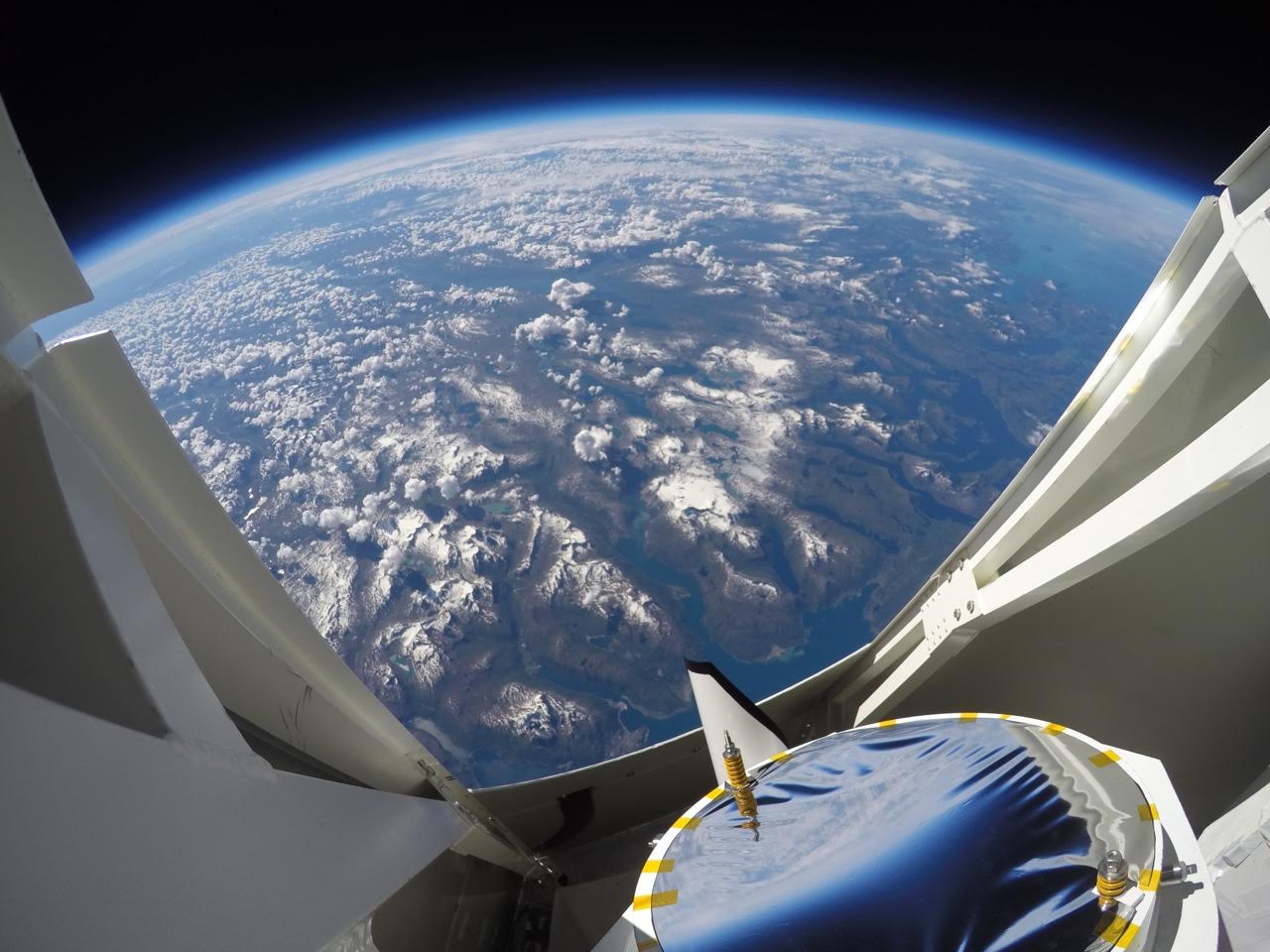Researchers detect polarized emission from “the Crab” for the first time in hard X-ray band
Wed, Aug 23, 2017-
Tags

Image of Earth from the stratosphere (~40km in altitude)
Cosmic rays are high-energy particles which shower on the Earth’s surface from outer space. Although cosmic rays are thought to be formed from supernova remnants, pulsars, or active galactic nucleus from outside the Milk Way, the mechanism of their acceleration up to high energy still remains unknown, including the direction and magnitude of the magnetic field where cosmic rays are formed.
Differing from image, timing, and energy measurements, polarization observations can estimate the direction and magnitude of a magnetic field by obtaining data on polarization of photons emitted from high-energy particles. This is a common method used for electric waves and visible light, but technical difficulties occur when applying it to X-ray and gamma-ray bands. The only detector specializing in polarization that has been able to observe polarization with high resolution was the OSO-8 Satellite from the 1970s. This is why full-scale development for X-ray and gamma-ray polarization detectors, known as polarimeters, has been taking place in recent years.
Researchers from Japan and Sweden, including Jun Kataoka, professor of astrophysics at Waseda University, collaborated to develop the polarimeter, PoGO+. Using this device, the international research group succeeded in detecting polarized emission from the Crab system, a bright celestial X-ray source which is both a supernova remnant and a pulsar, for the first time in the hard X-ray band (~20 – 160 keV).
This study was published in Scientific Reports on August 10.
Because X-rays and gamma rays from space are absorbed in the Earth’s atmosphere, current satellites lack reliability and accuracy when it comes to obtaining their polarization data. So instead, this experiment used an air balloon of 100m in diameter to lift PoGO+, which weighs two tons, into the upper stratosphere. This way, reliable and cutting-edge technology can be used at low cost. The balloon was launched from Esrange Space Corporation in Kiruna, Sweden in July 2016 and flew to Victoria Island in Canada while taking observations at three to four hour intervals (a total of 25 hours) for a week. The results of this study tentatively confirmed that the polarization data near the Crab pulsar are consistent with observations at optical wavelengths and can be used as a proxy for higher energy emission when constructing pulsar models.
Along with data from PoGO+, other observation results, which are to be reported from satellites such as “Hitomi” and future satellites under development specifically for polarization, are expected to contribute to understanding the acceleration phenomenon of high-energy particles. Furthermore, in addition to the Crab, PoGO+ is also carrying out observations on Cygnus X-1, which belongs to a binary black hole system. This celestial body is emitting hard X-rays in a situation where an object from an opposing star is about to land and be swallowed up by a black hole 15 times bigger than the sun. Although the microstructure near the black hole cannot be spatially resolved by images, it is possible to estimate its structure 100km in vicinity by looking at polarization data caused by reflections and scattering. The results of PoGO+ are expected to reveal the geometrical positioning of binary black hole systems.
Reference
- Published in Scientific Reports
- DOI:10.1038/s41598-017-07390-7
- Title: “Shedding new light on the Crab with polarized X-rays”
- Authors: M. Chauvin, H.-G. Florén, M. Friis, M. Jackson, T. Kamae, J. Kataoka, T. Kawano, M. Kiss, V. Mikhalev, T. Mizuno, N. Ohashi, T. Stana, H. Tajima, H. Takahashi, N. Uchida, M. Pearce
- Contact Professor Jun Kataoka for more information on this research













